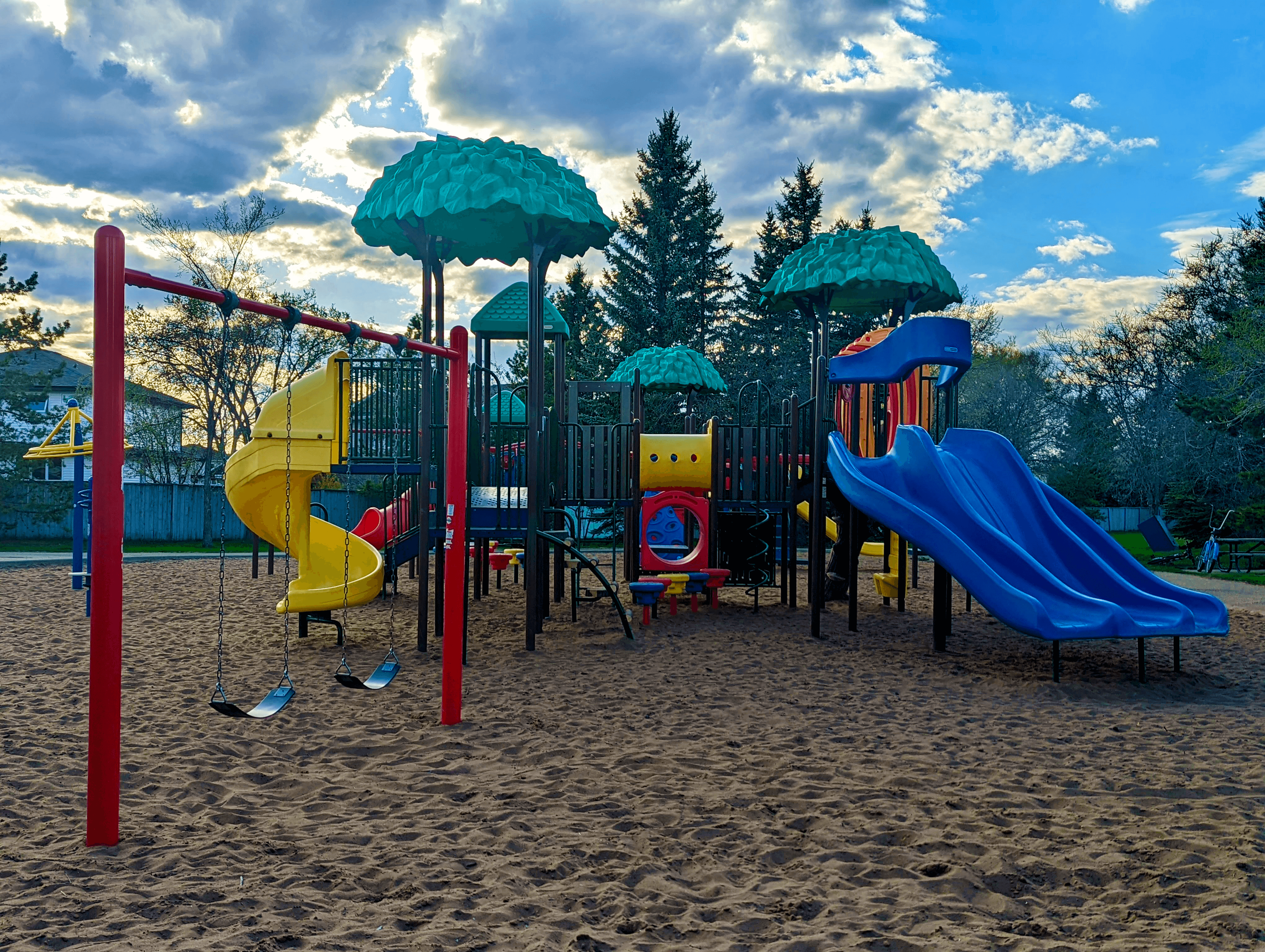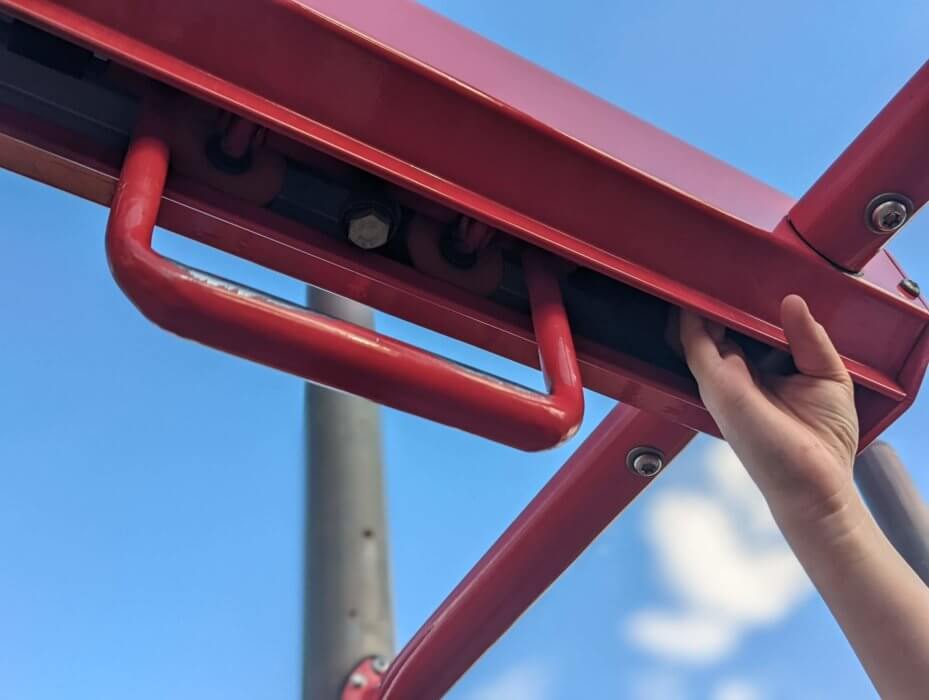As weather gets warmer, children and families are likely to be spending more time outdoors and at the local play structure! Although playgrounds are usually fun for children of all ages, accidents can happen, which may result in injuries. This article addresses some common play structure hazards seen by our experts in various losses. It is important to mitigate these hazards whenever possible, so that children and families can continue experiencing playgrounds as the fun spaces they are intended to be, and to understand what types of injuries might occur, and how. Possible dangers include falls from heights, lacerations from sharp edges, injuries from protrusions, entrapment, entanglement, crush or shear hazards or even unintentional interaction with other nearby structures or play elements.

Elevated playground platforms should be constructed with durable guardrails or protective barriers except where openings are required for access or egress onto play equipment (like a slide for example). In the event that a fall occurs anyways, play structures should be surrounded by protective surfacing that mitigates the severity of landing on that surface. This kind of surfacing may be loose materials like sand, pea gravel, wood bark/mulch, or shredded tire crumb, or it may be a unitary surface of rubber material. Although an appropriate loose fill material may be present at a playground, the impact attenuation properties for head impacts may only be satisfied if the depth of the fill is adequate, so areas where the fill has been worn away or swept aside may present a hazard.
Lacerations from sharp points or edges and injuries from protrusions are another common hazard identified on play structures. Generally, play structure edges should be rounded and not sharply angled to reduce the risk of injury upon interaction with the edge. Sharp edges or points may also appear on older structures. For example, older metal structures may present with burred edges or points and older wooden structures may present with splinter hazards. Fasteners used to hold the structure together may also present a hazard. If a bolt extends outward too far, a child may interact with it in a way that can cause injury.

CEP’s play structure assessment kit
Entrapment hazards may occur when openings permit the passage of the torso, but not the head. A best case scenario of entrapment may result in fear and distress, but the worst cases may result in strangulation. So, in order to ensure safety, play structure openings are required to have specific dimensions that either disallow a typical child torso and head or allow both a typical child torso and head through. CEP has a collection of specialized probes based on these dimensions that allow for an easy examination of whether a structure presents entrapment hazards.
Another hazard that may result in strangulation is the entanglement hazard, at which a drawstring, scarf or piece of clothing may become entangled in a structure opening or protrusion and cinch up against the child. To mitigate this hazard, the protrusion requirements also necessitate that no protrusions be hook-like, and another specialized toggle tool can be used to test areas such as slides and sliding poles to ensure no openings in these areas result in entanglement hazards.
Crush or shear hazards are typically associated with moving play elements, such as seesaws or other rocking equipment and gliding elements. When two components move relative to each other, they should be designed to avoid entrapping fingers or clothing at a pinch point. Such components should be designed to have any pinch points enclosed, or, if an opening is required, then the pinch points are required to be specified distance away from the opening.

Lastly, unintentional interaction with other play structures and users should also be considered. A child playing on structure should not be presented with a hazard from a separate structure in the play space or another child using a separate structure. As such, the play space layout should have adequate distance between play elements and structures to minimize the hazards from any negative interactions.
Hopefully the information contained in this article provides enough information to assess and safely access your local play structures. In the event that an injury does occur or a playground claim is submitted, our team of investigators can conduct thorough site examinations to identify whether an unmitigated hazard may have contributed to the injury or loss.
